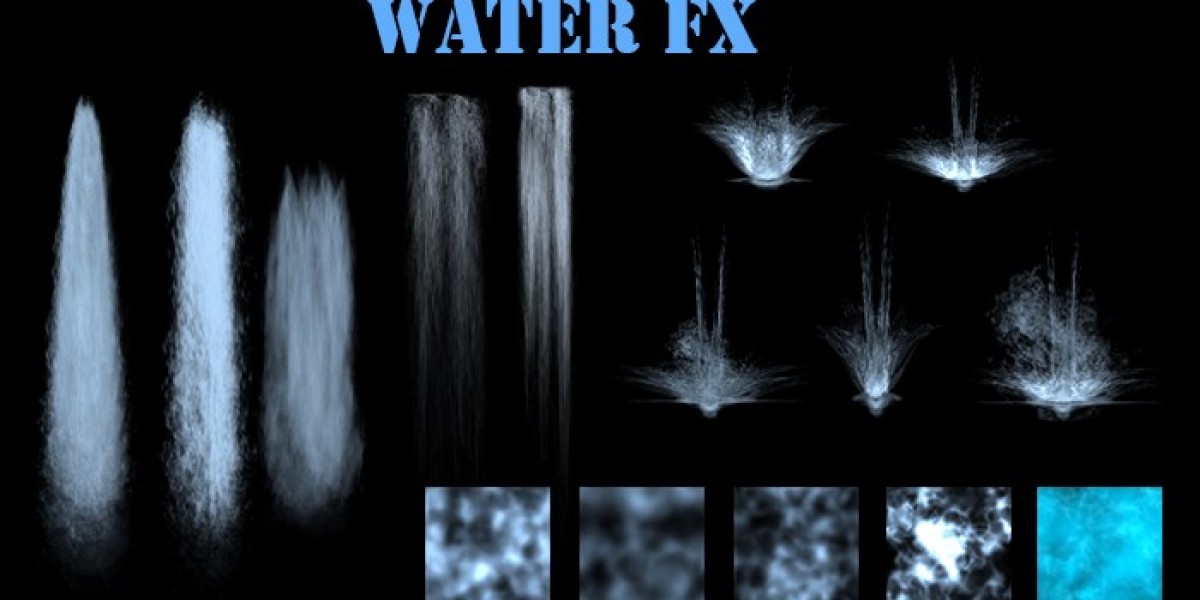Water FX technology has revolutionized the way we interact with water in various entertainment and artistic contexts. From breathtaking fountains and immersive water shows to cinematic special effects and interactive installations, the manipulation of water through advanced technology has become a hallmark of modern creativity. This article delves into the science behind Water FX technology, exploring its principles, applications, and the future potential of this fascinating field.
The Fundamentals of Water FX Technology
Water FX technology involves the controlled manipulation of water to create visual and auditory effects. The primary elements include water sources, delivery systems, control mechanisms, and lighting. Understanding the interaction between these components is crucial to creating effective and stunning water effects.
- Water Sources and Delivery SystemsThe first step in creating water effects is sourcing and delivering water. This can be as simple as using a natural water source, like a lake or river, or as complex as a custom-built reservoir. Delivery systems typically involve pumps, pipes, and nozzles designed to control the flow, direction, and pressure of the water. High-performance pumps ensure a continuous and regulated flow, which is essential for achieving consistent effects.
- Control MechanismsControl mechanisms are at the heart of Water FX technology. These include valves, sensors, and computerized systems that regulate the water’s movement. Modern water shows often use sophisticated software to synchronize water jets with music, lights, and other multimedia elements. This level of control allows for precise timing and coordination, creating harmonious and dynamic displays.
- LightingLighting plays a pivotal role in enhancing the visual impact of water effects. Underwater lights, colored LEDs, and lasers are commonly used to illuminate water in various hues and intensities. The interplay between light and water can create mesmerizing visuals, from shimmering cascades to vibrant fountains. Advanced lighting techniques, such as projection mapping, can also transform water surfaces into dynamic screens for videos and animations.
Applications of Water FX Technology
Water FX technology has found applications in numerous fields, ranging from entertainment and art to advertising and environmental design. Here are some notable examples:
- Fountains and Water ShowsPerhaps the most common application of Water FX technology is in fountains and water shows. Iconic examples include the Bellagio Fountains in Las Vegas and the Dubai Fountain at the Burj Khalifa. These installations combine powerful jets, synchronized lighting, and music to create captivating performances. The precision and coordination involved in these shows demonstrate the advanced capabilities of modern water control systems.
- Theme Parks and AttractionsTheme parks around the world utilize Water FX technology to enhance the visitor experience. From water rides with intricate effects to immersive nighttime shows, water plays a significant role in creating memorable attractions. For instance, Disney’s World of Color at Disney California Adventure Park uses over 1,200 fountains and a multitude of lights and projectors to bring stories to life on a screen of water.
- Cinematic Special EffectsIn the film industry, Water FX technology is essential for creating realistic and safe water-related scenes. Techniques include controlled splashes, simulated rainfall, and large-scale wave machines. By manipulating water with precision, filmmakers can achieve the desired visual effects without relying solely on natural elements, which can be unpredictable and hazardous.
- Art Installations and Interactive ExhibitsArtists and designers often use water as a medium to create dynamic installations and interactive exhibits. These works can range from small-scale indoor pieces to large outdoor structures. Interactive water installations, where viewers can influence the movement or pattern of water through sensors or controls, provide an engaging experience that bridges art and technology.
- Advertising and Public SpacesWater FX technology is also employed in advertising and the design of public spaces. Interactive water features in plazas and shopping centers draw attention and engage passersby. Advertisers have even used water projections to display logos, messages, or animations on fountains or water curtains, creating eye-catching and memorable promotions.
The Science Behind Water FX
Understanding the science behind Water FX involves exploring fluid dynamics, hydraulics, and the physics of light and sound. Here are some key scientific principles that underpin Water FX technology:
- Fluid Dynamics and HydraulicsFluid dynamics, the study of liquids in motion, is fundamental to Water FX. This field examines how water behaves under various conditions, such as flow rate, pressure, and turbulence. Hydraulics, a branch of fluid dynamics, specifically deals with the engineering applications of liquid flow, including the design of pumps, nozzles, and pipes used in Water FX systems.Engineers and designers must carefully consider these principles to ensure that water behaves predictably and achieves the desired effects. For instance, understanding how water velocity and pressure affect the height and shape of a fountain jet is crucial for designing visually appealing water displays.
- Physics of LightThe interaction between light and water is a cornerstone of Water FX. When light encounters water, it can be reflected, refracted, or absorbed. These interactions create a range of visual effects, from the sparkling surface of a fountain to the prismatic colors of a mist. The angle of incidence, wavelength of light, and properties of the water all influence the resulting visual effects.Advanced lighting techniques, such as projection mapping, take advantage of these principles to create complex and dynamic visuals. By projecting images onto a water surface, designers can produce a seamless blend of light and water, transforming fountains into living canvases.
- AcousticsSound also plays a role in Water FX, particularly in synchronized water shows. The way sound travels through water differs from its propagation through air, and this must be considered when designing audio components of a show. Underwater speakers and other specialized equipment are used to create immersive soundscapes that complement the visual effects.
Future of Water FX Technology
The future of Water FX technology promises even more innovation and integration with other technologies. As advancements in fields like artificial intelligence (AI), robotics, and augmented reality (AR) continue, we can expect Water FX to evolve in exciting ways.
- Artificial Intelligence and AutomationAI can enhance the control and coordination of water effects, making them more responsive and adaptive. Automated systems could adjust water displays in real-time based on environmental conditions or audience interactions. Machine learning algorithms might also be used to create more complex and creative water patterns.
- RoboticsRobotics can introduce new possibilities for water manipulation. Robotic arms and drones equipped with water jets or lights could perform intricate and dynamic movements, adding a new dimension to water shows. These robotic elements could also improve the precision and safety of water FX installations.
- Augmented RealityAR technology could merge virtual and physical water effects, creating hybrid experiences that blend digital imagery with real-world water displays. Viewers equipped with AR devices might see additional layers of animation and interactivity superimposed on water features, enhancing the overall experience.
- SustainabilityAs concerns about water conservation and environmental impact grow, Water FX technology will likely focus on sustainability. Innovations in water recycling, energy-efficient pumps, and eco-friendly materials will be crucial to ensuring that water effects are both spectacular and sustainable.
Conclusion
Water FX technology is a captivating blend of art and science, transforming our interaction with water in myriad ways. From the awe-inspiring fountains of iconic landmarks to the immersive experiences of theme parks and art installations, the controlled manipulation of water continues to push the boundaries of creativity and innovation. As technology advances, we can anticipate even more breathtaking and sustainable water effects, enriching our environments and enhancing our experiences.








